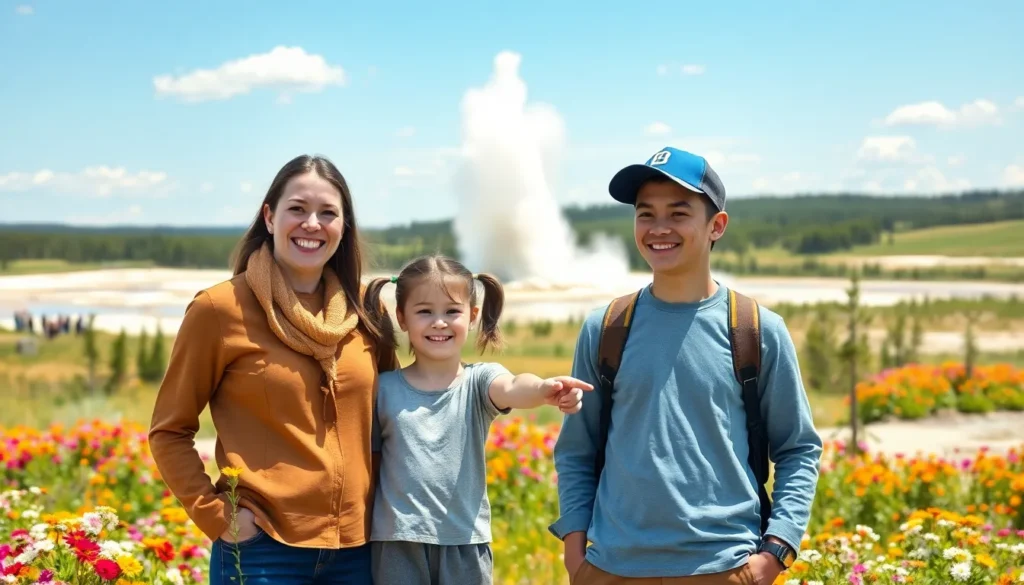In a world where everyone seems to be jet-setting to exotic locations, standing out with a travel blog can feel like trying to find a needle in a haystack. But fear not! With the right tips and a sprinkle of creativity, anyone can transform their travel experiences into captivating stories that inspire wanderlust.
How To Write A Travel Blog
Knowing your audience is crucial in travel blogging. Insights into their preferences provide guidance for creating content that resonates.
Identifying Your Target Readers
Identify specific groups interested in travel content. Travelers may include budget adventurers, luxury seekers, or family vacationers. Analyze demographics such as age, interests, and travel habits. Research tools like Google Analytics can offer valuable insights. Understanding readers’ needs helps craft relevant narratives.
Tailoring Content for Different Demographics
Tailor content for various reader segments to enhance engagement. Young travelers often seek adventure tips and social media-worthy destinations. Families might look for kid-friendly activities and vacation planning advice. Senior travelers usually prefer comfort and accessibility details. Recognizing these preferences leads to more effective storytelling. Use this knowledge to engage each demographic through targeted topics and relatable experiences.
Choosing a Niche

Selecting a niche is crucial in travel blogging. It helps in differentiating the blog from numerous others and attracts a specific audience.
Types of Travel Blogs
Various travel blog types cater to different interests. Adventure travel blogs focus on thrilling experiences, such as hiking, mountain climbing, or extreme sports. Luxury travel blogs highlight high-end destinations and exclusive accommodations. Budget travel blogs offer tips for affordable trips, sharing money-saving strategies for backpackers or frugal explorers. Family travel blogs provide insights into kid-friendly activities and destinations for traveling families. Solo travel blogs focus on the unique experiences of solo travelers, promoting independence and personal growth.
Finding Your Unique Angle
Finding a unique angle sets a travel blog apart. Identifying personal interests or experiences can guide this process. For instance, someone passionate about food may center their blog around culinary adventures in different cultures. Another could focus on sustainable travel, showcasing eco-friendly destinations and practices. Distinct perspectives, like off-the-beaten-path explorations or themed travel experiences, resonate with particular audiences. Engaging storytelling combined with a niche focus fosters deeper connections with readers.
Crafting Compelling Content
Compelling content captivates readers and encourages them to explore. Travel bloggers create engaging experiences through storytelling.
Writing Engaging Stories
Captivating stories draw readers in and keep them interested. Start with vivid descriptions of places, sights, and sounds. Employ humor and emotion to make narratives relatable. Include anecdotes that highlight unique aspects of destinations. Use striking visuals to complement written content. Always keep the audience’s preferences in mind, adjusting language and style accordingly. Prioritize authenticity in storytelling; genuine experiences resonate strongly. Incorporate questions or prompts that invite readers to reflect on their own travel dreams.
Incorporating Personal Experiences
Personal experiences add depth and authenticity to travel blogs. Share moments that shaped perspectives or changed the course of a journey. Highlight specific challenges faced during travels, along with how they were overcome. Relate stories of spontaneous adventures or unexpected encounters that sparked joy. Provide practical tips based on firsthand experiences to enhance credibility. Discuss cultural interactions that offer insight into local customs. Including personal insights fosters a connection with readers and encourages them to engage with the content actively.
Photography and Visuals
Photography plays a crucial role in travel blogging. High-quality visuals enhance storytelling and captivate the audience.
Importance of High-Quality Images
High-quality images serve as a window into travel experiences. They attract readers and provide context, making stories more immersive. Quality visuals foster emotional connections between readers and destinations by showcasing vibrant landscapes, cultural moments, and local interactions. Compelling imagery often encourages shares and engagement, increasing the blog’s reach. Effective visuals can transform a simple narrative into an engaging story, leaving a lasting impact on the audience.
Tips for Travel Photography
Planning ahead for photography can produce stunning results. Utilize natural light, especially during golden hour, for softer, more flattering images. Experiment with angles to capture unique perspectives and interesting compositions. Incorporating local elements, such as architecture or street life, adds authenticity to the shots. Focus on subjects that tell a story, highlighting the essence of each destination. Keep equipment simple—a smartphone can work wonders when shooting spontaneous moments. Editing tools enhance images to ensure they align with the blog’s aesthetic and engage readers effectively.
Promoting Your Blog
Promoting a travel blog effectively requires strategic approaches to reach a wider audience.
Utilizing Social Media
Leverage platforms like Instagram, Facebook, and Pinterest to showcase travel content. Share stunning visuals and snippets from blog posts to catch attention. Engage with followers by responding to comments and joining relevant groups. Use hashtags to increase visibility, focusing on specific interests, destinations, and trends. Regularly updating social media accounts not only keeps the audience informed but also drives traffic to blog posts. Collaborate with influencers in the travel niche for broader reach, tapping into their established audiences. Each of these techniques enhances the potential to attract new readers.
Networking with Other Travelers
Attend travel meetups and connect with fellow bloggers at conferences for valuable insights. Creating a network increases opportunities for collaboration on projects. Guest blogging on reputable sites allows cross-promotion and introduces the blog to new readers. Engaging in online forums and groups dedicated to travel discussions can also lead to fruitful connections. Actively commenting on other travel blogs fosters engagement and opens doors for reciprocation. Find community in local travel clubs or online platforms to exchange tips and stories, contributing to personal growth and the growth of the blog. Each interaction can lead to new opportunities for visibility.
Monetizing Your Travel Blog
The journey of monetizing a travel blog can be rewarding. Various strategies exist to generate income while sharing travel experiences.
Exploring Different Revenue Streams
Affiliate marketing presents an excellent opportunity for bloggers. By partnering with travel companies, bloggers earn commissions on referrals. Advertisements provide another revenue source. Placing ads on the blog can yield significant income through platforms like Google AdSense. Selling digital products adds to the mix. Ebooks and travel guides can be created and sold directly to readers. Offering sponsored posts introduces another option. Brands pay bloggers to feature their products or services, increasing exposure for both parties. Engaging in membership programs also aids monetization. Subscribers gain exclusive content or resources for a recurring fee. Each of these revenue streams complements traditional travel blogging, diversifying income sources effectively.
Collaborating with Brands
Collaboration with brands enhances monetization potential. Establishing partnerships with travel companies can lead to sponsored content opportunities. Bloggers could showcase products that align with their niche, gaining financial benefits while maintaining authenticity. Events like press trips allow bloggers to experience destinations firsthand, promoting the brand in their posts. Building a strong media kit highlights a blog’s reach and audience, making it easier to attract brand partnerships. Utilizing social media effectively showcases blog content to potential partners. Influencer marketing strategies open additional avenues, allowing travel bloggers to share experiences with wider audiences. Effective brand collaboration leads to increased revenue and strengthens a blogger’s reputation within the travel community.
Conclusion
Writing a travel blog offers a unique opportunity to share personal adventures and inspire others. By honing in on a specific niche and understanding the audience’s interests, bloggers can create compelling content that resonates deeply. Engaging storytelling combined with stunning visuals enhances the overall experience for readers, making them feel connected to the journey.
Promotion and networking play significant roles in expanding reach and building a community around the blog. With the right strategies in place, monetizing a travel blog becomes attainable. Embracing creativity and authenticity will not only enrich the blog but also encourage others to explore the world, one story at a time.



